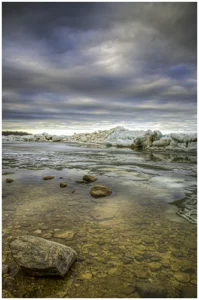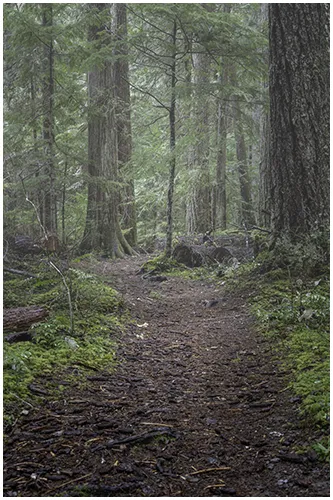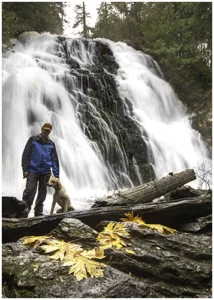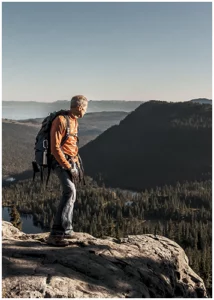
ON1 NoNoise AI Review: Eliminate Noise & Sharpen Your Photos
Are you tired of noise or grain messing up your photos? ON1 NoNoise AI could
Grand Opening & Black Friday Sale = 50% Off


How can you, as a photographer, reveal the hidden landscapes and stories shrouded in the drama of a foggy day? I’m going to challenge you to see past the haze and discover the hidden landscapes and stories it holds.
I’ll reveal to you how to navigate the ethereal glow and transform a blanket of mist into a canvas for your art.
From deciphering the different personalities of fog to mastering the camera settings that turn obscurity into stunning visuals, this tutorial isn’t just a guide; it’s your initiation into a different way of seeing. Are you ready to step into the unknown and capture the breathtaking, elusive beauty waiting for you?
Mist is a cloud at ground level, made of tiny water droplets or ice crystals. It forms when the air cools to its dew point, turning vaporized water into visible moisture. Fog softens and diffuses light, transforming familiar scenes into mysterious ones. Knowing how fog forms may help you plan your trips.
There are many types of fog. Understanding their differences helps you choose your locations.
Here are a few common ones:
Photographing in the fog has many secret benefits. It softens the harsh light, creating a dreamy atmosphere. It also simplifies scenes by hiding distracting details, focusing on essential elements, and creating strong contrast and colour.
Fog adds depth and mystery to your photos, making them more appealing. When you photograph fog, you capture its unique ability to transform landscapes.
Here’s a table outlining the benefits of photographing a forest in fog and mist:
| Benefit | Effect in Forest Photography in Fog/Mist |
|---|---|
| Softens Harsh Light | Creates an ethereal, dreamy atmosphere, reducing harsh shadows on trees. |
| Simplifies Scenes | Hides distracting background elements, allowing focus on individual trees, paths, or prominent features. |
| Adds Depth & Mystery | Creates layers and a sense of distance within the forest, enhancing intrigue and mood. |
| Enhances Contrast | Allows for strong visual separation between close elements (trees) and the muted, foggy background. |
| Transforms Landscape | Turns a familiar forest into an otherworldly, unique, and often dramatic scene. |
Early Black Friday Save up to 35% On Photo RAW – Download your free trial today!
Fog reduces the light; therefore, you’ll need a slower shutter speed for a proper exposure. A slower shutter speed lets more light in, compensating for fog’s light-absorbing nature.
Be careful of camera shake when using a slower shutter speed; using your tripod is crucial for tack-sharp photos. Try different speeds to capture the fog’s mood, like during sunrise when light changes fast. Also, downloading a light meter for your phone helps find the right settings.
I have found that manual focus is best for fog and mist photography. Autofocus sometimes struggles in fog due to lack of contrast. Switch to manual focus and adjust the focus ring for sharp subjects.
Use live view and zoom in to fine-tune focus. This is key for capturing fog’s texture details. Many photographers pre-focus on a distant object before the fog arrives, a helpful technique.
Aperture settings affect depth of field, crucial in foggy landscape photography. A wider aperture (lower f-number) creates a shallow depth of field, isolating your subject and enhancing the misty atmosphere.
A narrower aperture (higher f-number) increases depth of field, focusing more of the scene. Try different apertures to get your desired effect. Use a smaller aperture for detailed fog or mist across the scene. Adjusting aperture affects how fog interacts with light, which can impact your image.
To get stunning foggy images, you need to know the best times and places. Early mornings, around sunrise, are perfect. The cooler air makes fog more likely.
Look for fog in coastal areas, valleys, and near water. Coastal spots have advection fog, while valleys get radiation fog. Check the weather forecast to plan your fog photo shoots.
For fog photography, you need more than a camera. A sturdy tripod is key for low-light shots. It helps with camera shake.
Filters are also vital. A polarizing filter cuts glare and boosts the contrast. Neutral density filters (ND filters) are great for long exposures.
Fog is great for silhouettes. Place your subject against the light, like the sunrise. The fog softens the light, creating a beautiful scene.
Use spot metering to underexpose for a strong silhouette. Focus on your subject’s outline. This adds mystery and drama to your fog photos.
Long exposure changes fog photography. Slow shutter speeds blur fog into a silky effect. This technique works best with moving fog.
Try different shutter speeds for the right blur. Again, a tripod helps keep your shots sharp during long exposures.
Even on foggy days, light can be too much. A neutral density filter (ND filter) can overcome these types of issues. It lets you use slower shutter speeds without overexposing.
ND filters come in different strengths. Find the right one for that silky fog effect. This feature helps capture fog movement.
Try long exposure shots in fog. Capture fog swirling around trees or rolling over lakes. These create dreamy, serene images.
On coasts, long exposure smooths water against foggy textures. These shots turn ordinary scenes into art. Remember, it’s about creative expression.
Telephoto lenses are great for fog. They isolate subjects and add mystery. Fog textures appear denser and more dramatic.
Telephoto lenses reveal fog details. Use a longer focal length for stunning fog images. Don’t forget your tripod.
Try new things in your fog photography. Shoot from low angles to show the height of trees or buildings. Look for lines that lead the eye into the scene, adding depth.
Shoot from unusual spots, like above or through a window, for a creative twist. Don’t be afraid to experiment for stunning fog images. These ideas can inspire you.
Capture silhouettes of trees or buildings against a soft, diffused light. Use long exposure to smooth out water, creating a serene effect.
Photograph mist in mountain valleys for depth and drama. Look for light rays breaking through the fog for magic in your photos.
Fog can trick your camera’s light meter, leading to wrong exposure. I can’t stress this enough: use your camera’s histogram to check exposure. Try manual mode for full control over settings.
A light meter can help with correct settings, even at sunrise. This is crucial in foggy conditions.
Not predicting mist conditions is a big mistake. Fog forms in specific weather, like high humidity and cooler temperatures.
Check the weather forecast regularly, and especially monitor the dew point. This helps plan your fog photography outings. I’m sure I don’t have to tell you fog is more common in the early morning or late evening.
Understanding local weather patterns boosts your fog photography chances. This knowledge is key.
I’m going to say this again: a sturdy tripod is needed for sharp images in low light. A lens cloth keeps your lens clean and dry.
Filters, like polarizing and neutral density filters, enhance contrast and allow for those long exposures. Keep various lenses close, including telephoto, for different views.
As this post illustrates, fog and mist photography offers a captivating way to transform ordinary landscapes into extraordinary, mysterious scenes. By understanding the different types of fog and their formation, you can better anticipate prime shooting opportunities.
Equip yourself with a sturdy tripod and appropriate filters like NDs to unlock the full potential of foggy conditions, especially for breathtaking long exposures.
Don’t shy away from creative compositions, whether crafting dramatic silhouettes or isolating subjects with a telephoto lens. By applying these actionable tips and avoiding common pitfalls like incorrect exposure or neglecting weather predictions, you’re well-equipped to capture stunning, evocative fog photographs that truly stand out.
Fog is hard to photograph because it scatters light, reducing contrast and making scenes appear hazy. This can make subjects look flat and lack detail. To overcome this, use a long lens and find strong compositional elements.
To make fog more visible, use a tripod and a longer exposure to smooth out the fog’s movement, creating a more ethereal look. Positioning subjects close to the camera can also create a sense of depth by contrasting them with the hazy background.

Are you tired of noise or grain messing up your photos? ON1 NoNoise AI could

Every time I get ready to photograph a waterfall, I feel a rush of excitement.

If you’re looking for an easy hike, well… this hike is not it! Most of